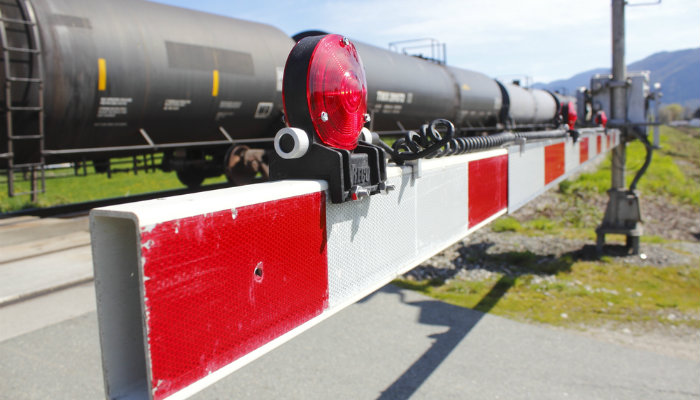Railroad Crossing Risks and Driver Safety Tips

More than 2,200 rail grade crossing collisions occurred across our country’s approximately 140,000 miles of railroad track in 2018.
And, in 2018 alone:
- 270 people were killed at railroad crossings. Over the five years of 2014-2018, there were 798 fatalities involving motor vehicles at railroad crossings.
- 99 people were killed because a driver went around a lowered gate, marking a 10-year high.
According to Operation Lifesaver, a driver or passenger is about 20 times more likely to die in a collision with a train than in a collision with another vehicle.
Common Causes of Railroad Crossing Accidents
- No “Warning Signals” Installed. This means that there are no crossing arms, flashing lights or alarms at the crossing. Rural areas tend to fall into this category.
- Defective Warning Signals. When functioning correctly, crossing gates have gates that lower, lights that flash and alarms that sound. When this doesn’t happen, it could be a result of poor maintenance or a defective signal.
- Operator Error. Examples of this include speeding, operating while under the influence or operating while distracted.
- Obstructed View/Improper Sight Lines of the Crossing. This could basically be anything that impedes a driver from seeing an oncoming train, such as overgrown vegetation, tree branches that obscure the view and more. Motorists should be able to see an approaching train.
- Faulty or Defective Trains/Parts and Train Tracks. As with anything, there is always the possibility of mechanical defects that can cause a train accident such as faulty brakes or defects within the train tracks themselves.
- Warnings and other communication problems. When a train approaches a railroad crossing, it should signal to let others know it is coming. In addition, there could be improper signage or negligently designated railroad crossings.
Safety tips for Drivers
- NEVER drive around lowered gates. Not only is it against the law but statistics tell us it can be a deadly move.
- When approaching a railroad crossing, slow down, look, and listen for a train on the tracks, especially at “passive” crossings. Passive devices do not warn motorists that a train is actually on the tracks; they just alert motorists that they are approaching a railroad grade crossing.
- Look carefully in both directions before crossing a railroad track—even during the day. Sixty-seven percent of railroad crossing collisions occur in clear weather conditions.
- Before entering a railroad crossing, check that there is enough room on the other side of the tracks for your vehicle to cross completely and safely. You do not want to get trapped on the tracks..
- Never race a train to the crossing. You can easily misjudge a train’s speed and distance. Just like your sideview mirrors, the train you see is closer – and moving faster – thank you think.
- If you suspect a signal is not working right, call the emergency number posted on or near the crossing signal and report it.
- Should your vehicle stall on the tracks, get out and away from your vehicle and the tracks. Call the emergency number posted on or near the crossing to let them know about your stalled car.
- Be aware that you may need to cross multiple sets of tracks at some railroad crossings If this is the case, be sure to watch out for additional trains that could be coming from either direction before crossing.
- Never stop on the railroad tracks. Keep moving once you have entered the crossing, and to avoid stalling.
By law, trains have the right-of-way at all railroad crossings. They cannot stop quickly or change directions to avoid a collision. In fact, it takes a train traveling 55 miles per hour at least a mile to stop – the equivalent of 18 football fields.
However, there are cases where a train company may be found negligent, such as in the event of missing or broken train warning signage or lack of safety crossbars. Train operators traveling too fast or failing to use a horn to signal of its approach may contribute, too.
How can We Help You?
DO YOU NEED LEGAL ASSISTANCE?
Contact the capable counsel you need now. One of our experienced staff will speak with you personally and we will provide you with a free, no-obligation case evaluation.
CONTACT US FOR A FREE REVIEW OF YOUR CASE
JUST WANT TO STAY UP-TO-DATE?
SIGN UP FOR OUR EMAIL NEWSLETTER
If you would like to receive news and blog updates on a regular basis, sign up to receive our email newsletter. Your email address will only be used to send you our newsletter and respond to inquiries.
SIGN UP FOR NEWSLETTER
Past results afford no guarantee of future results and each case is different and is judged on its own merits. The choice of a lawyer is an important decision and should not be based solely upon advertisements.
Related
